If you’ve ever seen the Magenta Triostar Stromanthe I’m sure you were wowed by the exotic look of this stunning house plant. The best way to spot one is by it’s multi-colored foliage with swirls of various shades of green, white-cream, and pink.
If you take a peek on the backsides of the leaves you’ll see a deep pink or magenta, making this plant even more amazing!
It’s safe to say that hordes of people gravitate toward this gorgeous, unique looking plant and it’s colorful leaves. It would be a statement piece for any home!
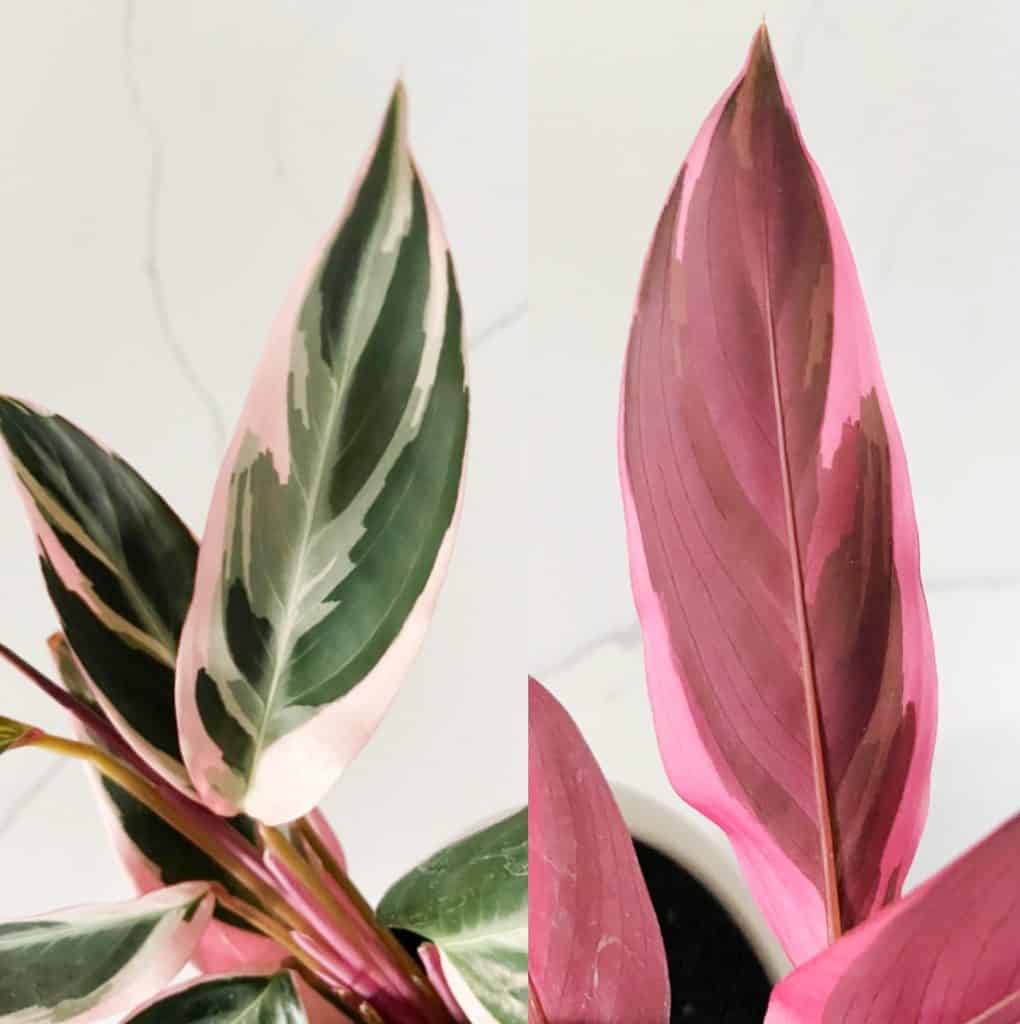
Table of Contents
Background And History
The Magenta Triostar (stromanthe sanguinea triostar), also called Stromanthe Thalia, Stromanthe Triostar Plants or Tricolor, are tropical plants that originated from the rainforests of Brazil. This multi-hued plant is a member of the prayer plant family. It lowers its leaves during the day and lifts them up at night—as if in prayer—as part of its circadian rhythm.
Because it folds its leaves at night, it is often confused with calathea plants. The beauty of this plant lies in its enormous variety—no two leaves of this plant have the same variegation.
With the right care and environment, this plant can grow 2 to 3 feet in height, creating a tropical paradise vibe indoors.
Beginners beware! This plant lies a little on the high-maintenance side of care so it’s not the best plant for new plant lovers. If it’s care isn’t great, chances are, this moderately-fast growing plant will act out. You’ll see drooping leaves, leaves turning yellow or brown around the edges, and mold buildups.
Fun fact: The Magenta Triostar can produce flowers in winter or early spring. The rare flowering emerges above the foliage in white or pink scattered blooms within orange, tube-shaped bracts. While it is a pleasant sight, it is not commonly seen in indoor plants.
Care and Maintenance
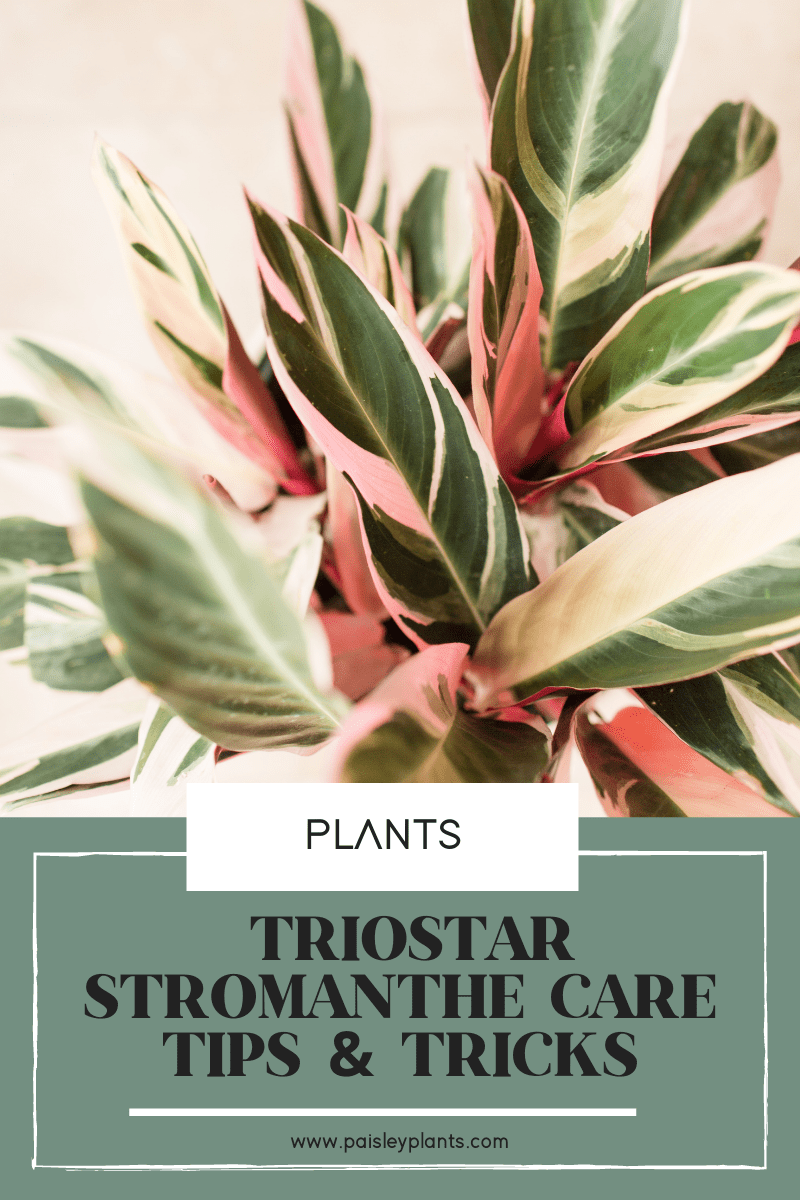
This post includes affiliate links.
Growing the Triostar Stromanthe can be challenging. The plants require bright indirect sunlight, regular mists, consistent watering and a humid temperature to thrive.
The plant’s specific requirements and its tendency to throw a tantrum when its needs are not met are some of the reasons why it is not recommended for entry-level plant friends.
I understand plant care and maintenance can be tricky business. Hopefully, this all-encompassing guide can help make the process easier.
Water
The Magenta Triostar requires consistent watering and misting to maintain healthy foliage. To keep the plant in its prime, water twice or more times a week or whenever the top inch of soil has dried out. To ensure it thrives, mist regularly.
The key is to keep the soil moist, not soggy. Excess water in the soil can lead to root rot which can cause an early demise of your beloved plant.
How do you know if you’re under watering or overwatering your plant? Keep a lookout for developments in the leaves.
- If the leaves are turning yellow around the edges, chances are, you’ve overwatered the plant. To rectify the mistake, allow the plant’s soil to dry completely before you water it again.
- If the leaves are turning brown around the edges, it needs a good watering! You can either bring it to the sink and give it a thorough shower, fill your sink with a few inches of water and allow it to sit in the water or completley remove the plant from the pot to give it a good watering. I usually opt for a bath!
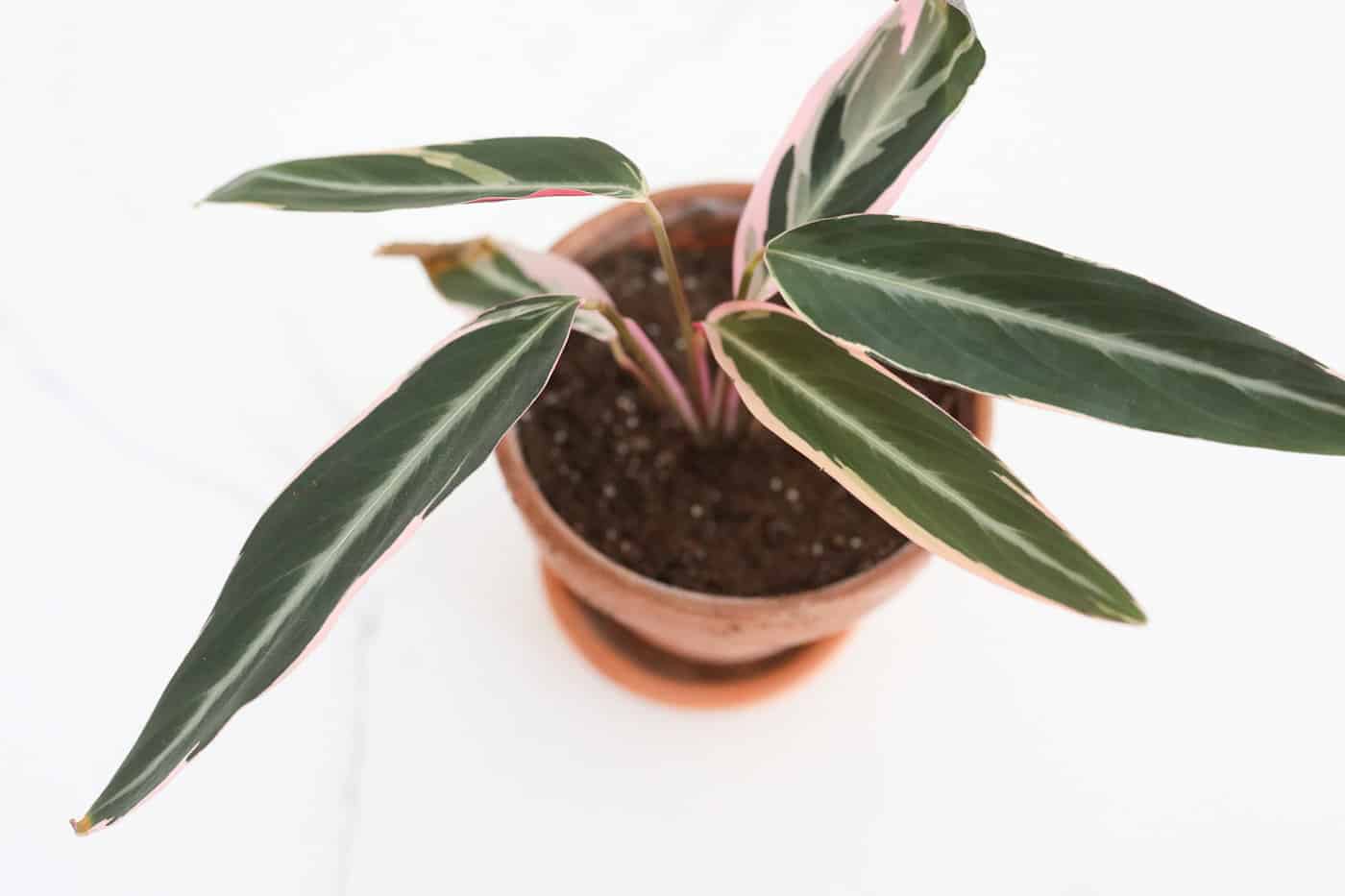
The plant is sensitive to chemicals found in tap water. So, if you’re not using filtered, distilled, or spring water to meet its water requirements, my favorite trick is to fill up a container with water and leave it out overnight. This will allow the chemicals to evaporate.
Friendly advice: The plant’s water requirements change with seasons, so you may want to water it less frequently during the winter months.
Light Requirements
The Magenta Triostar needs bright indirect light to thrive. If you’re growing your plant indoors, a warm, well-lit spot will serve to give it just the right amount of indirect sunlight it needs to grow. If you’re growing the plant outdoors, place the plant in a shaded area for best results.
Remember, never place your plant in direct bright light! Too much sun can cause your plant to lose its vegetation. It can also burn and eventually kill your plant.
Turn your plant once a week for more pronounced variegation and even growth and dust its leaves so that the plant can soak in as much light as possible.
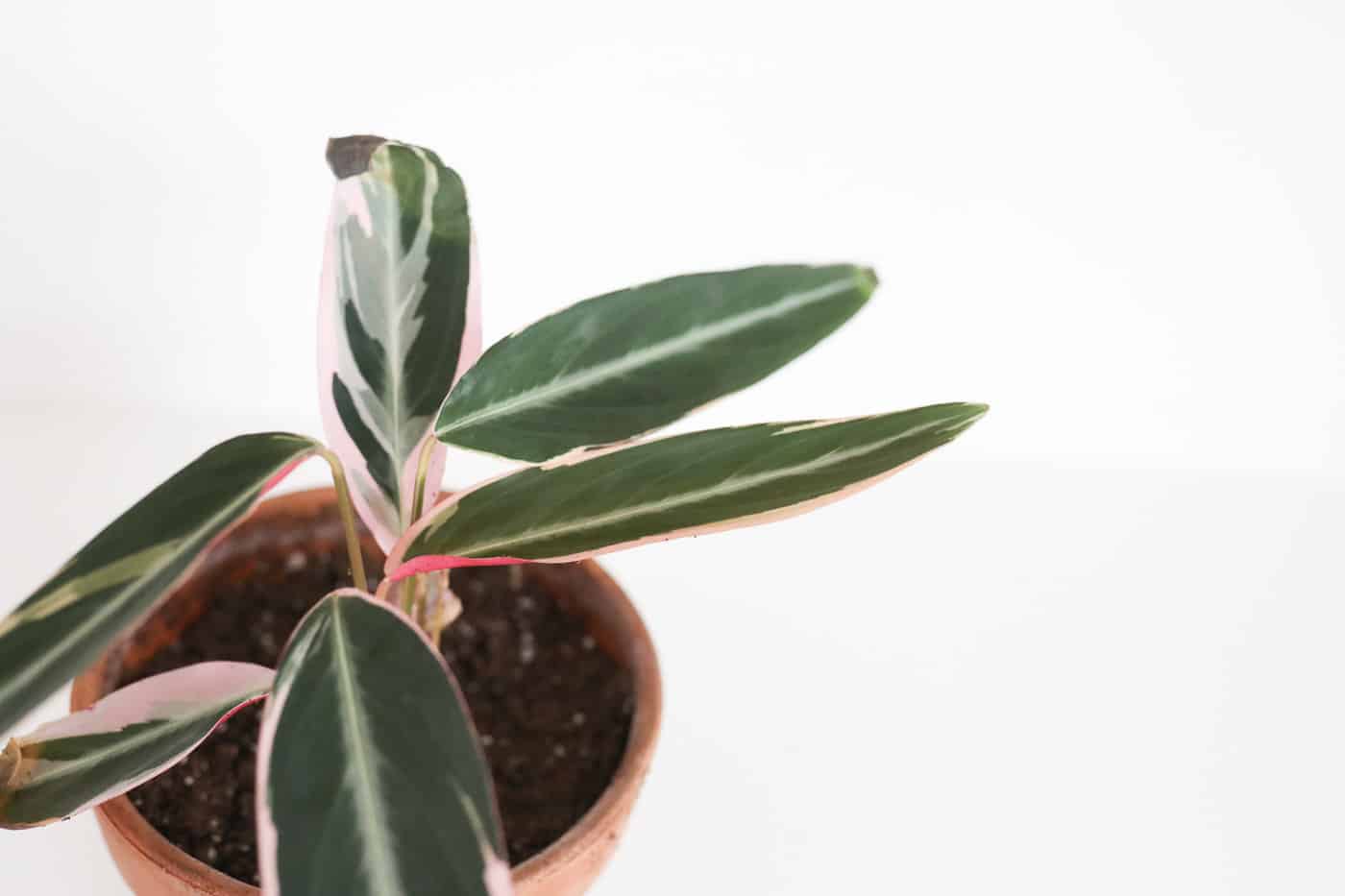
Not getting enough light can be detrimental to your plant.
Temperature And Humidity
Magenta Triostar grows best with high humidity. Place in a humid environment or a room with a warm room temperature of around 65°F to 80°F. Creating humid conditions with warm temperatures will keep your plant from drooping or turning brown or yellow on the edges.
If you don’t have a warm place in your room that meets the Magenta Triostar’s temperature and humidity requirements, consider propping it up on your bathroom window. That should do the trick just fine.
Soil
The Magenta Triostar requires light, well-draining, and breathable soil to grow. Ideally, the soil you select should have water retaining properties that hold moisture without becoming soggy. Also be sure to use a pot with drainage holes to allow the water to get out!
Fertilizer
During the growing season of spring and early summer, give the plant a balanced fertilizer without excessive nitrogen, ideally diluted to half its strength to help the plant sprout new leaves. If you’re unsure about the diluting business, you can opt for organic fertilizers like worm castings instead. As they tend to be less strong, chances are, you might not need to dilute it all.
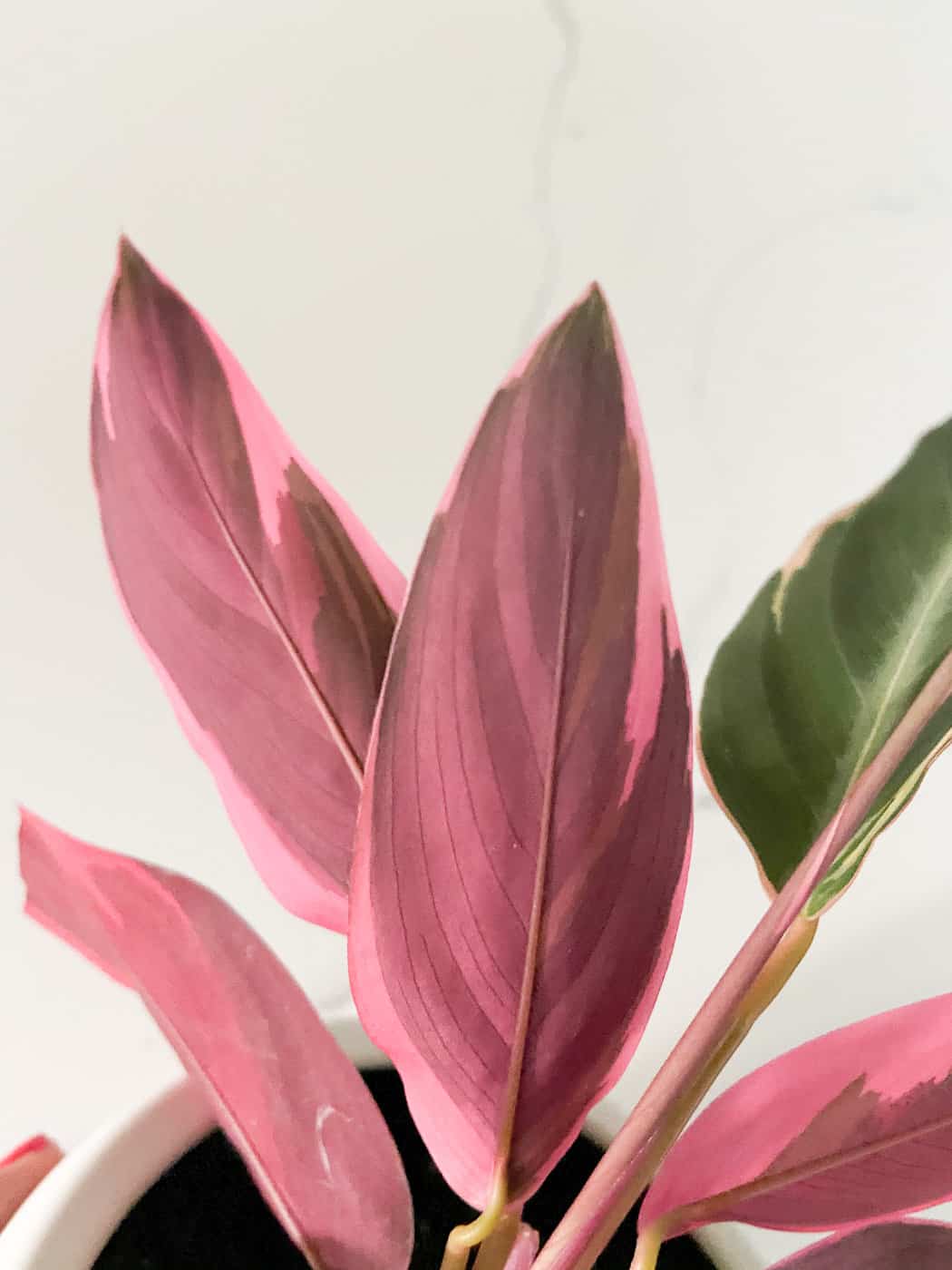
Side note: If you have been meeting your plant’s water and light requirements and the leaves are still turning brown or yellow, keep an eye on how much and how often you’re using the fertilizer.
Too much fertilizer use can spell trouble for your Magenta Triostar. As it contains salts, it can draw moisture out of the plants, which can cause a fertilizer burn. To avoid this, consider mapping out a fertilizer schedule and sticking to it.
Pests and Disease
The Magenta Triostar is prone to pests and diseases. It may play host to common plant-suckers like aphids and spider mites if its water requirements are not met.
So keep the humidity in check to give the plant a pleasant, pest-free environment to grow in. If your plant is infested by these pests, consider using a mild horticultural soap or neem oil spray to eliminate them.
The plant’s need for humidity makes it susceptible to fungus and mold build-ups. So water your plant only when the topsoil dries off. You can, of course, mist regularly to maintain a humid environment.
Propagating
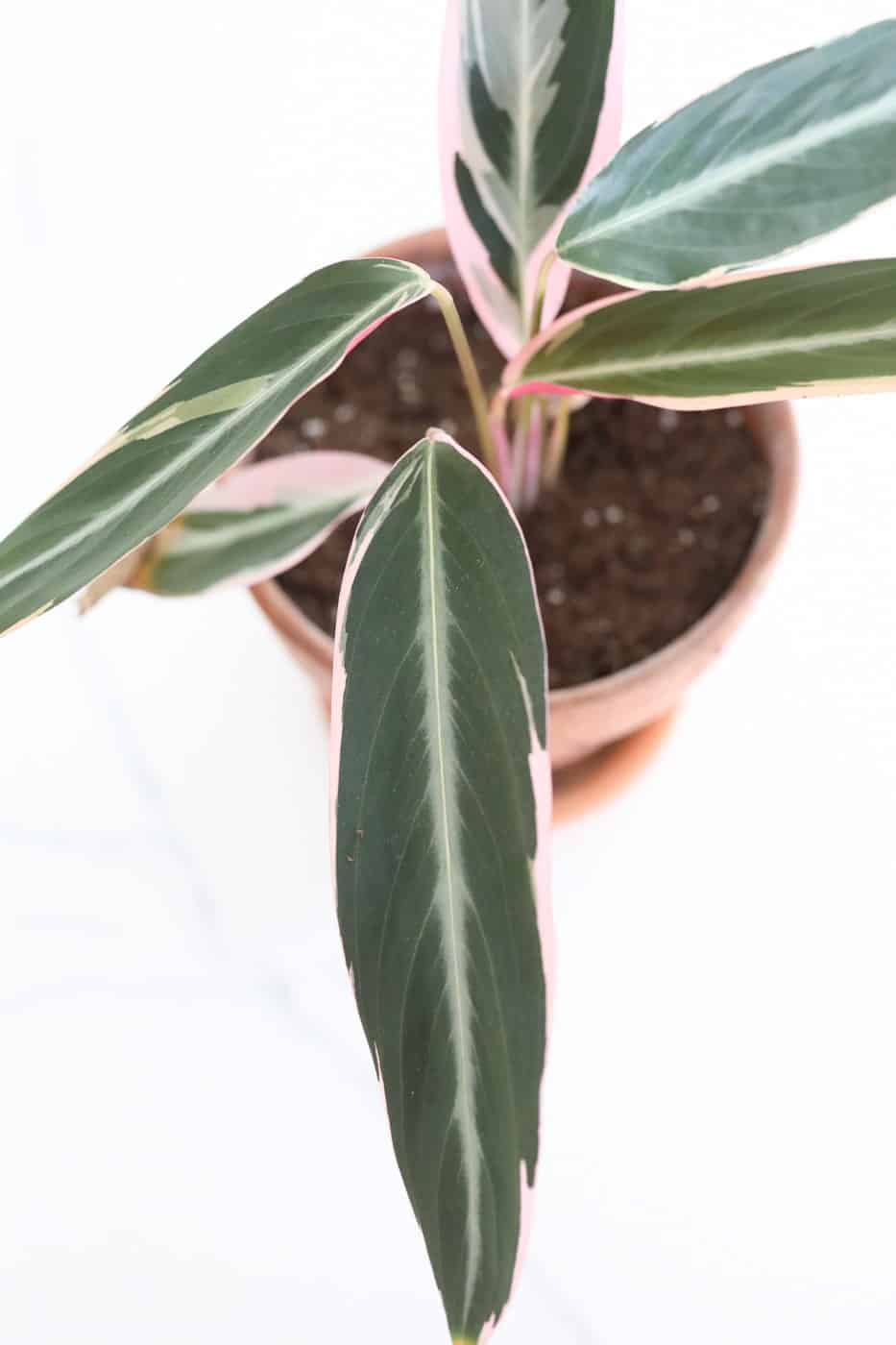
Unlike most plants, you can’t propagate a Magenta Triostar plant through plant clippings! If you want to propagate your plant you need to do so through division.
You can easily propagate this plant by division during the growing months to create new plants.
Here’s how you can do that:
- Remove the plant from its container. Loosen the soil and separate the roots with your fingers.
- Decide where you’re going to make the cut. Ideally, each division should have at least 2 to 3 leaves. Once you’ve checked that out, separate some of the clips of tubers (rhizomes) with your hand and make the cut.
- Now, place the new divisions in fresh soil and repot the mother plant. Make sure the soil is pressed firmly and watered thoroughly to give the plant a comfortable environment to grow in.
- Maintain light and water requirements with your new plant divisions to encourage growth. When you see new leaves, it’s a sign that your plant has successfully established its roots in the soil.
And there you have it, another Magenta Triostar to love.
Repotting
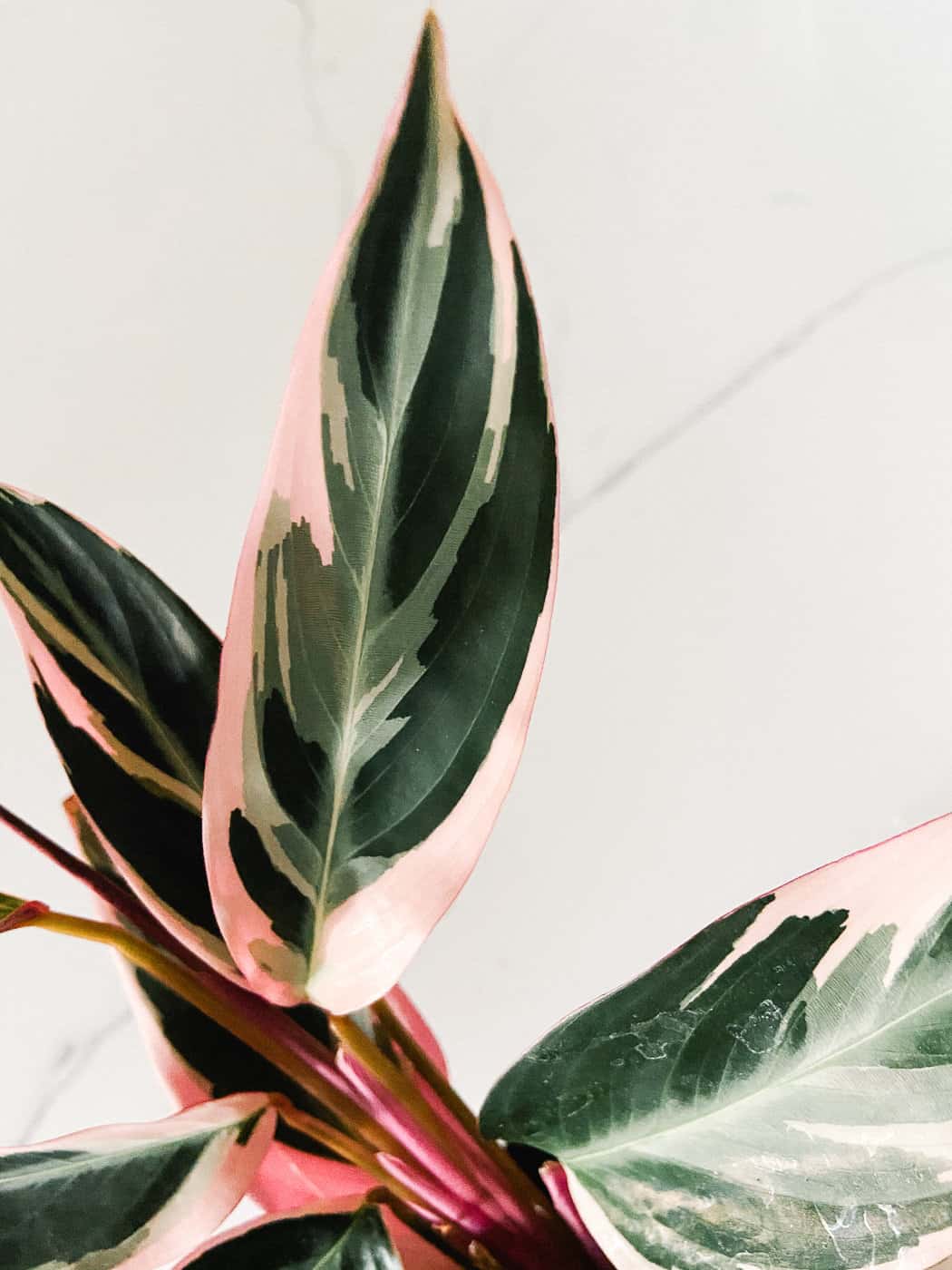
Repotting the Magenta Triostar is easy work. All you have to do is place the plant in a larger pot filled with compost-rich soil and repot once it outgrows its current pot. With their growth rate, they need repotting once every few years. Once their roots begin to grow out the bottom of the container, you’re safe to repot it in a bigger pot.
Alternatively, if you want to refresh the soil to give the plant access to new nutrients, you may choose to get a new pot even if your plant has not outgrown the current one yet. You can reuse the same spot and just change the soil.
Here’s how you can repot your plant easily:
- Place a newspaper on the floor.
- Remove the plant from the pot and shake off any remnants of old soil to clean the roots.
- Now, take the pot in which you plan to grow your plant and add a layer of soil to it. Place the plant in this pot and cover it with new, nutrient-rich soil.
- Put the plant in a spot where it can receive bright, indirect sunlight. Water as required and keep the soil moist by misting regularly.
Please note: Repotting the Magenta Triostar will not cause immediate changes. So, don’t panic and overwater the plant to encourage growth. Give it 2 to 4 weeks to get accustomed to its new home. Once it settles in well, it should continue to grow at a normal rate.
Frequently Asked Questions (FAQs)

How do you keep Magenta Triostar pink?
The biggest thing to remember is to not give it too much light but also not enough light. Too much direct sun or not enough light can cause the pink to fade.
Why is my Stromanthe Triostar drooping?
If your Stromanthe Triostar is dropping, you’re likely not meeting the plant’s water requirements. If you want your plant to thrive, make sure to water it lightly regularly.
Why is my Stromanthe Triostar curling?
The Stromanthe Triostar’s leaves curl when they’re not receiving the moisture they need. It could be because it is under-watered, has insufficient humidity in its environment, or is not responding well to the quality of water used to meet its water requirements.
Check out these fun plant care posts for other beautiful plants!

